Science Fiction Double Feature: Planet of the Vampires (1965), It! The Terror From Beyond Space (1958)
Did these drive-in classics really inspire the 'Alien' franchise?
The first Alien movie brought axle-grease and body horror to sci-fi cinema back in 1979. Audiences were dazzled by Ridley’s Scott’s seemingly unprecedented vision. But there were fans and sci-fi savvy critics who scored plenty of nerd points by pointing out similarities to a couple of fondly remembered B pictures from previous decades.
Terrore nello spazio (Terror in Space, 1965) was released in the US by AIP as Planet of the Vampires.
‘Planet of the Body Snatchers’ would have been more accurate, if a lot less sexy.
Barry Sullivan (a senior lead in thrillers since the forties) captains one of two starships investigating a distress call from the fogbound planet of Aura. Coming in to land, the crew suffer weird gravitational headaches and start attacking each other. The Captain manages to slap some sense back into his crew, but the other ship isn’t so lucky. Having beaten each other to death, the other astronauts rise from their hastily dug graves, tear off their polythene shrouds and begin menacing the survivors.
It turns out they’ve been possessed by a dying race of astral spirits keen to hitch a ride in human bodies, and they’re not much fussed whether those bodies are still breathing or not.
Shot with verve and mystery by horror legend Mario Bava (the maestro behind the still-sublime Black Sunday, 1960), Planet of the Vampires is striking yet suspense-free stodge, loosely based on the 1963 short story Night of the Id (aka, One Night of 21 Hours) by Renato Pestriniero.
Interestingly, the movie opens on the same grounded, workaday note as Alien. We meet the crew of the Argos going about their duties, busy with the routine complexities of maintaining a starship, in this case flicking random switches and peering at bubble-monitors with a look of deep concern.
And there’s plenty of juicy technobabble to help things along.
“The intensity of the gravitational field will be maintained at the wave-moment of force G7. Synchronise the meteor-rejecter on the electromagnetic control device. Apply neuro-vascular tension. Suppress cortical areas X, Y, Z. Insert the automatic controls. We will keep a distance of two parsec from our sister ship Galliot!”
(The English version of the script was written by B-veterans Ib Melchior and Louis M. Heyward)
The original Star Trek proposed far more sober ideas about running a starship when its first episode aired the following year.
When the Argos finally crunches down, Bava, along with Fellini’s set designer Giorgio Giovannini, conjure a consistently lurid, alien world out of their next-to-nothing budget. The planet Aura is a lurid dream of ghost-train colours, swirling fog, bubbling slime and Lovecraftian rocks.
But the lush, pulpy atmosphere is wasted on a script that never gets its act together. The monotony isn’t helped by the astronauts looking pretty much indistinguishable in their Buck Rogers motorcycle leathers. (The international cast on this American-Italian-Spanish co-production spoke their lines in their native language with only a vague idea what their co-stars were actually saying.) The movie wakes up at the end with a ‘we’ll-blow-up-the-ship’ climax in which the crew finally get to fire off their ray guns at their melt-faced zombie adversaries.
But the most vivid sequence – and the one most remarked upon by Alien aficionados - is when the survivors explore the throbbing interior of a derelict alien spacecraft. It’s here they discover the elephantine skeleton of a mysterious extra-terrestrial pilot, one whose origins are never truly explained.
It’s a genuinely evocative touch. A real ‘What the Heck is That!?’ moment that gooses the imagination, gets us asking questions the storyteller is smart enough not to answer. Give the audience bare bones and they’ll visualise the monster that once stalked your imaginary world. This is how you breathe life into fantasy, by feeding your audience just enough for them to fill in the blanks.
Screenwriter Dan O’Bannon knew a good trick when he saw one and later admitted to reimagining this sequence for the ‘space jockey’ in Alien, casting the same spell to even more haunting effect – an effect subsequently dispelled by all those pedantic sequels, prequels and franchise tangents.
Explaining a mystery is like dissecting a facehugger. The facehugger dies and no one’s scared.
The movie also presages John Carpenter’s The Thing (1982)1 with its who-goes-there paranoia, weary audio-log (“I confess now, to whoever may hear this, that today, now, I am experiencing fear.”) and sinister (if illogical) twist ending. But overall Planet of the Vampires’ status as a pulp classic has perhaps been overstated.
Unlike Bava’s movie, It! The Terror From Beyond Space (1958) has all the flamboyance of a decommissioned aircraft carrier, but orchestrates its cheesy thrills way more coherently, while its similarities to Alien are far more obvious. The crew certainly smoke just as much as the grunts aboard the Nostromo!
With a cast of dependable character actors (from Marshall Thompson to Kim Spalding and The Green Mile’s Dabbs Greer), the movie was shot in six days in noirish black-and-white by Edward L. Cahn. A veteran of the B-picture grindhouse, Cahn was not only good, but lightning-fast, capable of 40 set-ups in a day.
Optimistically set in the year 1973 (a mere fifteen years after the movie was released), humanity’s first attempt to land on Mars has ended in disaster. Colonel Edward Carruthers (Thompson) has not only crash-landed on the red planet, but now faces court martial back on Earth for the murder of his entire crew – though he insists this was the doing of some marauding Martian xenomorph.
Bringing him home aboard a second rocket-ship, the rescuers remain sceptical about the Colonel’s wild stories of alien stowaways, until a ravenous reptilian hulk starts helping itself to the crew and leaving a trail of desiccated leftovers stuffed into the air-conditioning.
As film historian Bill Warren points out2, It! was one of the very few sci-fi movies of the 1950s actually written by a committed sci-fi author, in this case Jerome Bixby (Twilight Zone, Star Trek, Fantastic Voyage). Bixby keeps the tension ticking as the alien batters its way up the rocket, deck by claustrophobic deck. The cornered survivors make desperate sorties, one to retrieve emergency blood supplies for a mauled crewmate, another involving a daring spacewalk. They hope to electrify one of the staircases, but their ploy leaves the monster only mildly toasted, while a plucky crewman is left wedged between the bulkheads and fending off the alien with nothing but a welding torch.
The beleaguered crew turn out to be a trigger-happy bunch, who clearly missed the lesson at astronaut-school that explained why it might not be a good idea to let off high-powered munitions aboard a cramped starship.
Did I mention, this vessel is powered by a nuclear reactor? Never mind. You guys have got this. Now get out there and blow me up an alien!
With a hairy-chested disregard for their own safety, the crew rig a crate of hand-grenades to a tripwire, but the blast only gives the beast a migraine. Volleys of 9mm rounds ping off its scaly hide as it bends an infantry rifle into a pretzel and– What the hell? Did the science officer just fire a bazooka!? For a rescue detail, these guys are equipped like they’re storming the beaches at Normandy.
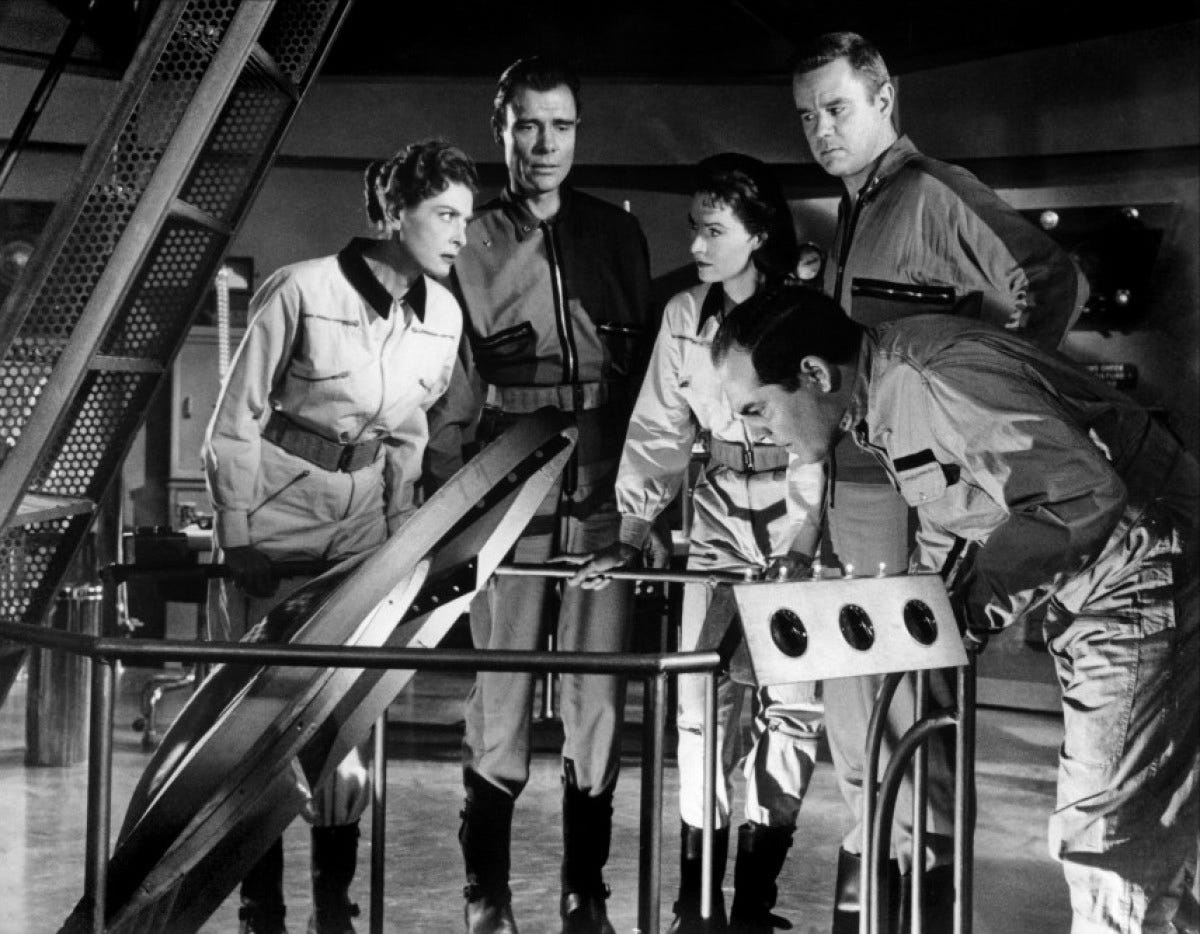
Crammed into the nose of the rocket, facing certain death at the talons of an unstoppable foe, someone notices a conspicious increase in oxygen consumption. The creature must breathe air just like they do! In fact, it must have monstrous lungs in order to suck up what little atmosphere there is on Mars. Because of science.
Climbing into their spacesuits, the crew wait for the creature to get into position then blow the airlock, draining the ship of oxygen and suffocating the beast.
“I have a theory, based on what you and Jack told me. You say it’s man-shaped, humanoid. Perhaps there was once a civilisation on Mars. It ended. Disease, war, something terrible. The Martians that were left went back to barbarism. Savage murderers.
“Maybe that’s what we’ve got on board.”
Eric Royce, Science Guy (Dabbs Greer)
It! The Terror from Beyond Space is tight, fast-paced, campy fun - an almost-gem, unfortunately let down by ‘It!’ itself.
Designed by Paul Blaisdell (who created - and played - the monsters in It Conquered the World, The She-Creature [both 1956] and Invasion of the Saucer Men [1957]3), the movie’s xenomorph looks reasonably menacing when lurking in the shadows or tearing through doors in a glowing billow of steam.4
But the more the monster shows itself, the more the magic gives way to the absurd reality of a guy in a baggy costume.5
It turns out the real terror in this movie was working with monster actor Ray ‘Crash’ Corrigan, a stuntman who went from playing gorillas in Tarzan movies to rugged cowboy leads in The Three Mesquiteers (1936) and The Range Busters (1940). By the 1950s he was reeling from a horrific divorce and back to being Hollywood’s go-to gorilla guy, gooning about in a monkey suit - uncredited - in movies like Bela Lugosi Meets a Brooklyn Gorilla (1952).
According to Blaisdell’s former assistant Bob Burns, Corrigan was reluctant to visit Blaisdell’s studio in West L.A. to get a proper fitting for his monster costume. “He just sent over a pair of long johns. Paul just stuffed them with newspaper and built the whole suit over that.”6
By the time it came to shoot, everyone realised the mask was way too small. Corrigan could barely see through the eye-holes and his dimpled chin was sticking out of the monster’s mouth. Fortunately, Blaisdell was on hand to fit the mask with a bottom row of teeth and had Corrigan’s protruding chin painted to look like a tongue.
According to Blaisdell’s biography7 , Corrigan was often drunk on set and struggled with directions. Half-blinded by his mask, he ignored the script’s insistence that the xenomorph be quick and deadly. Instead, Corrigan lumbered about like another one of his gorillas. It! The Terror From Beyond Space was Corrigan’s final role.8
“Of the nineteen men and women who set foot upon the planet Mars, six will return. There is no longer a question of murder, but of an alien and elemental life force. A planet so cruel, so hostile, that man may find it necessary to bypass it in his endeavour to explore and understand the universe.
“Another name for Mars is ‘Death’!”
Of course, no story exists in a cultural vacuum and Alien is way more than the sum of its influences. The movie’s screenwriter and story co-creator Dan O’Bannon (who passed in 2009) was cheerfully open about the movie’s influences, citing both Planet of the Vampires and It!, as well as EC’s lurid sci-fi comics Weird Science and Weird Fantasy (both 1950-53), but mainly Forbidden Planet (1956) and his own movie, Dark Star (co-written with John Carpenter, 1974).
I wonder if he ever saw AIP’s Quatermass rip-off Night of the Blood Beast (1958), in which earthbound scientists get impregnated with stomach-dwelling aliens, or Queen of Blood (1966), which recycles the stalked-on-a-spaceship plot of It! but with a green-skinned alien succubus.
Like O’Bannon, It! screenwriter Jerome Bixby (who passed in 1998) was also a sci-fi devotee. He edited sci-fi magazines and published plenty of short fiction before moving to L.A. to write movies and TV, and would certainly have been familiar with Canadian author A.E. van Vogt (1912-2000), who - along with Asimov, Heinlein and editor John W. Campbell - spearheaded the Golden Age of sci-fi periodicals.9
Van Vogt’s first published story, Black Destroyer, appeared in the July 1939 issue of Astounding Science Fiction, the story of a ravenous feline alien wreaking havoc aboard a starship.

The story later appeared in his 1950 ‘fix-up’ novel, The Voyage of the Space Beagle10, along with his second novella, Discord in Scarlet, published in the December 1939 issue of Astounding. This one tells of a tentacled horror drifting through space, just waiting for a host in which to plant its last remaining egg.
“Morton watched the skillful fingers of the surgeon, as the electrified knife cut into the fourth man’s stomach. The last egg was deposited in the bottom of the tall neutronium alloy vat. The eggs were round, grayish objects, one of them slightly cracked.
“As they watched, the crack widened; an ugly, round, scarlet head with tiny, beady eyes and a tiny slit of a mouth poked out. The head twisted on its short neck, and the eyes glittered up at them with a hard ferocity.”
Discord in Scarlet by A.E. van Vogt (1939)
Forty years later, van Vogt sued 20th Century Fox for plagiarism. The studio denied any similarity, but made an out-of-court settlement of $50,000.
Stay weird.
To find out more about me, my books, comics and other projects, click on my LinkTree
A remake of Howard Hawks’ The Thing From Another World (1951), based on the 1938 novella Who Goes There? by John W. Campbell
In Keep Watching the Skies: American Science Fiction Movies of the Fifties (2010, McFarland)
For the full story of Blaisdell’s career, read Vincent Di Fate’s exhaustive article, The Strange Creature of Topanga Canyon: Paul Blaisdell, His Life and Times (2011) over on Reactor (formerly Tor.com)
According to Bill Warren, Richard Matheson once told Joe Dante that Bixby gave the script a hasty rewrite after seeing the costume, doing all he could to keep the monster in the dark.
The monster suit got recycled the following year on another Edward L. Cahn sci-fi picture, Invisible Invaders.
Di Fate (see above)
He retired to focus on managing Corriganville, a successful movie ranch in the City of Simi Valley, now the site of a public park that still bears Corrigan’s name.
Bixby and van Vogt’s fiction appeared together in the May 1950 issue of Other Worlds, featuring War of Nerves by van Vogt and And All For One by Bixby. A revised version of War of Nerves would later appear in van Vogt’s 1950 fix-up novel, The Voyage of the Space Beagle.
Van Vogt published nothing but fix-ups of previous stories after converting to Dianetics (the precursor to Scientology) in the early 1950s. A close friend of L. Ron Hubbard, he helped run the West Coast centre for Dianetics throughout the decade and wouldn’t publish any new stories until early 1960s.

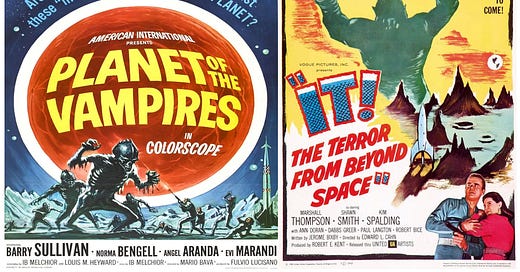



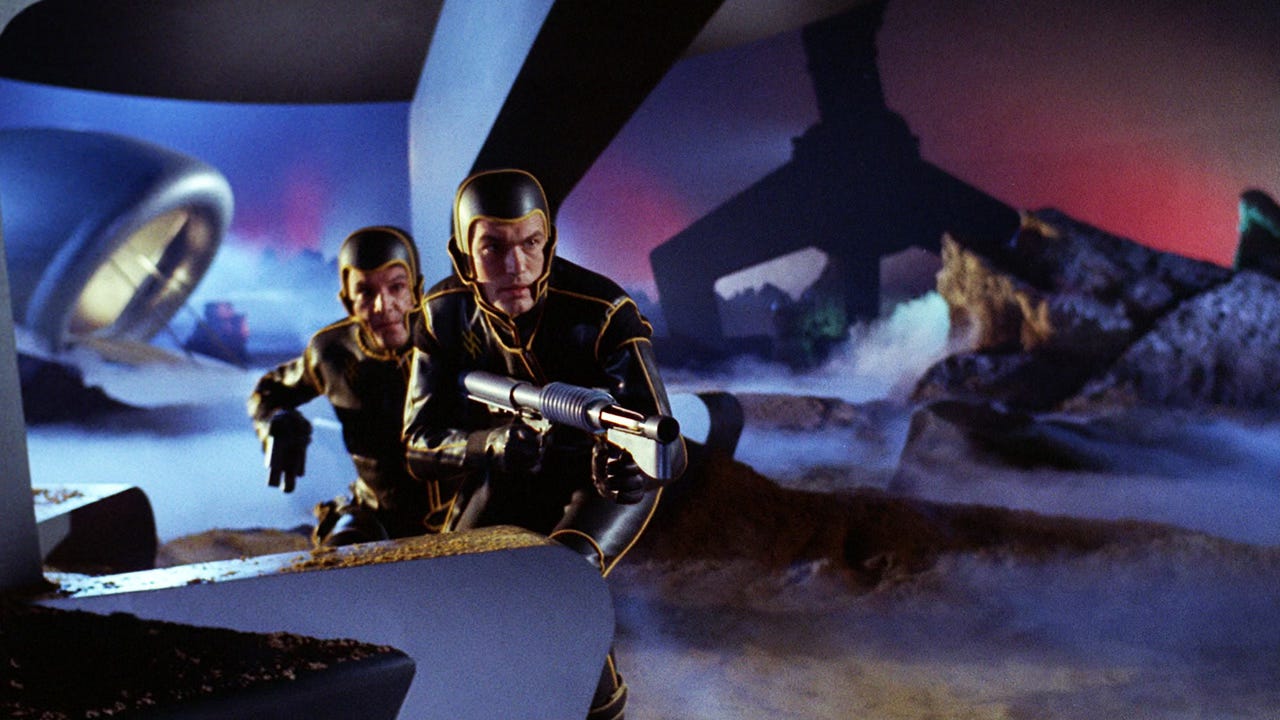
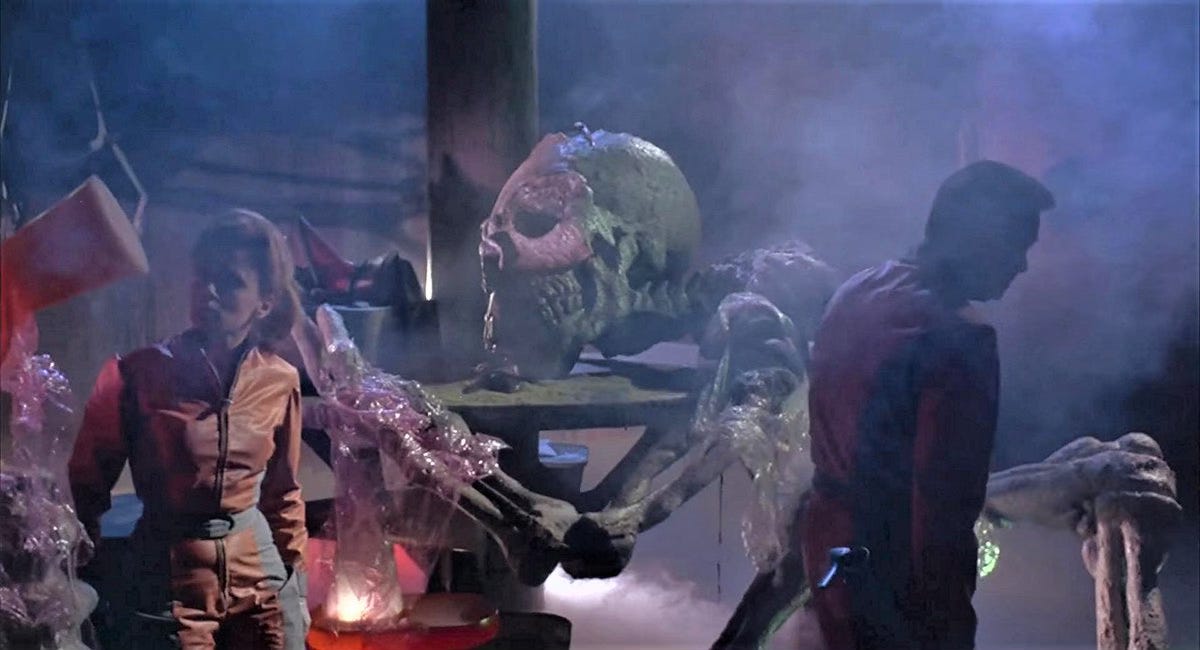
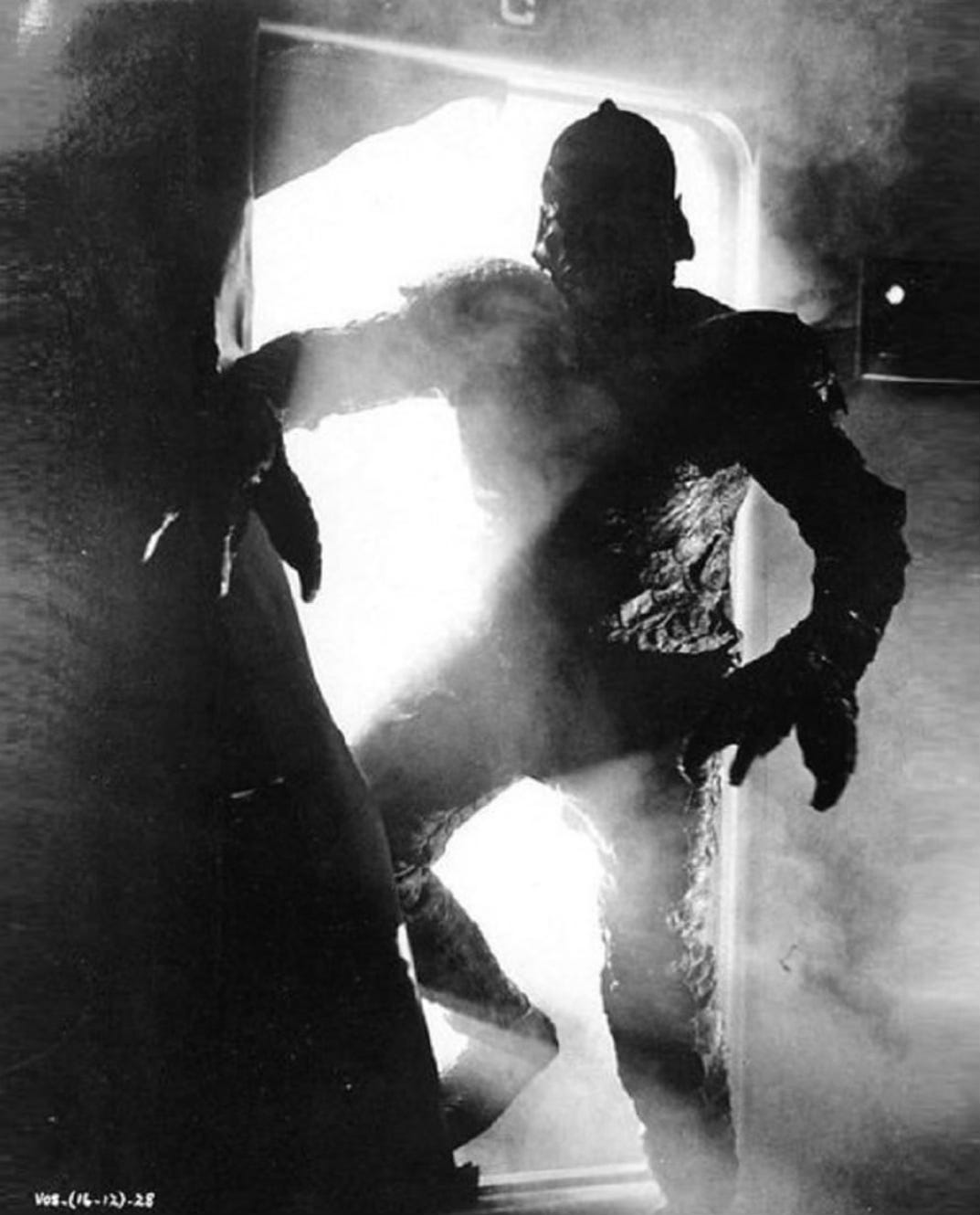
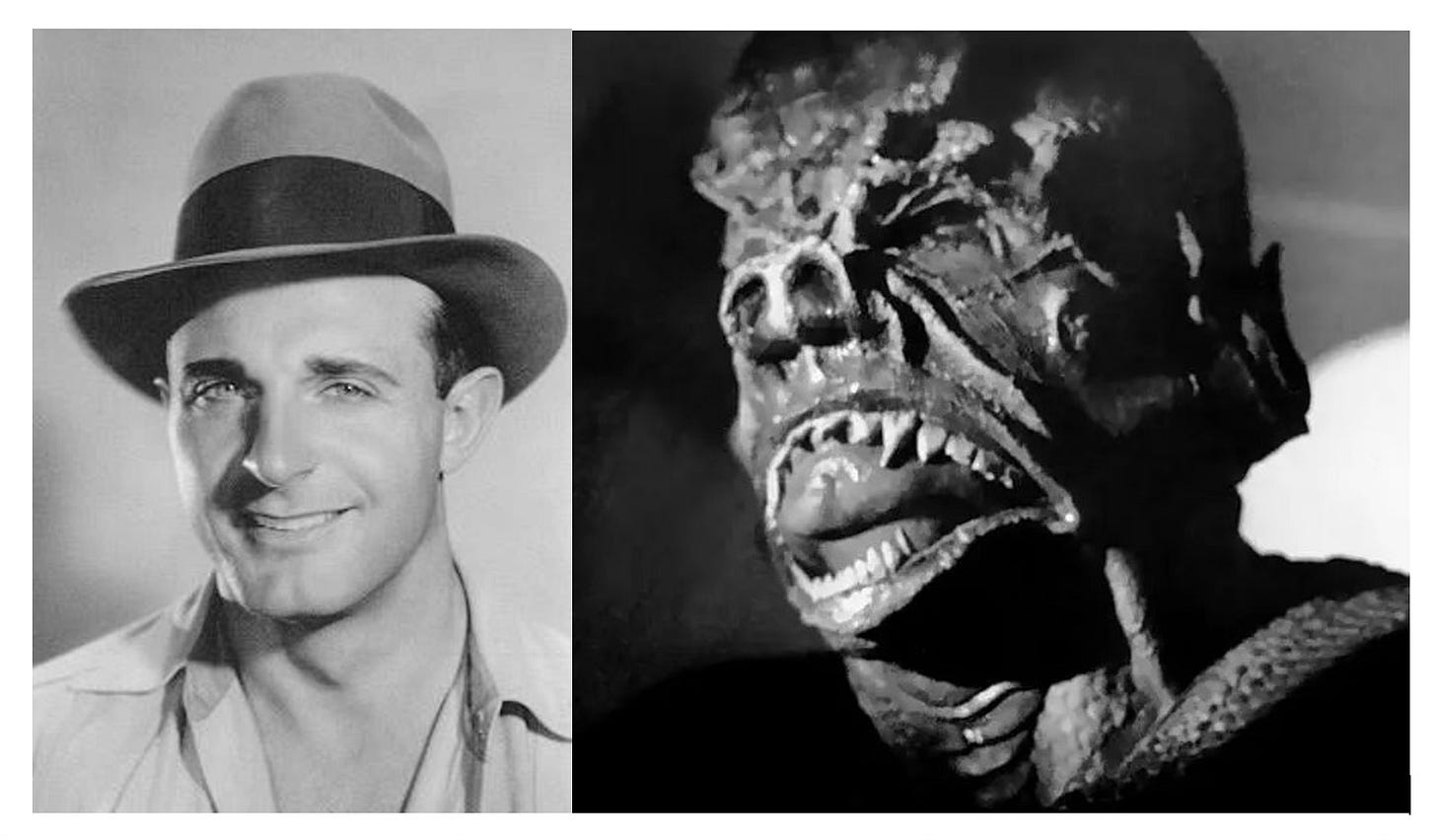
Fun newsletter edition, Alec! I love watching classic sci-fi pulp whenever I get a chance. I'm adding these 2 to my list. One of my favorite pastimes when I don't have the time, however, is admiring the amazing poster art.
Van Vogt was Canadian, and he was one of the country's most successful writers in the SF genre.